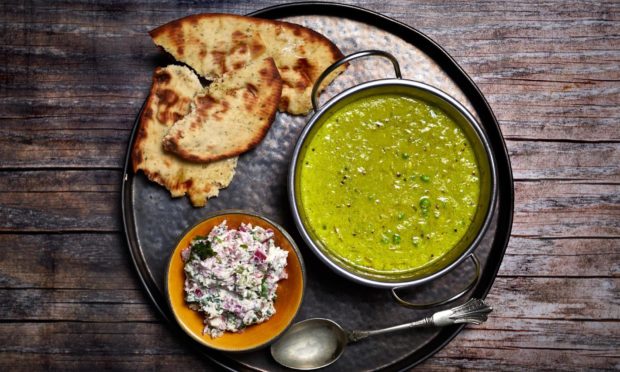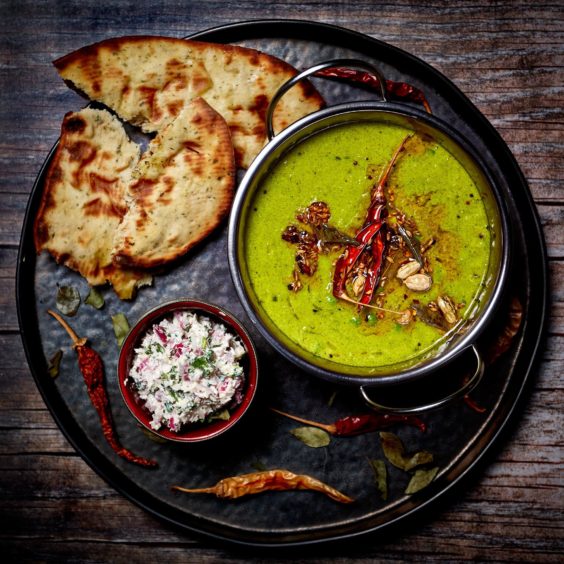November is World Vegan Month, so what better way to kick it off than with this delicious pea dal and coconut chutney?
For more Midweek Meal ideas, take a look at the previous recipes in this series here.
This recipe was supplied by Yes Peas!
Pea dal and coconut chutney
Ingredients
- 500g frozen peas
- 3 cloves garlic, roughly chopped
- 2 cm piece of ginger, peeled and roughly chopped
- 2 green chillies, seeds in, roughly chopped
- 1 tsp sea salt
- 1 tsp black pepper
- 1 tbsp vegetable oil
- 2 tsp black mustard seeds
- 2 tsp cumin seeds
- 1 tsp ground turmeric
- 1 onion, finely chopped
- 400ml can coconut milk
- 6 curry leaves (optional)
- 2 tsp garam masala
- Small handful chopped fresh coriander leaves, to serve
- Coconut chutney, to serve
For the coconut chutney:
- 25g desiccated coconut
- 1 small red onion, finely chopped
- 1 garlic clove, crushed
- 1 tbsp white wine vinegar
- 1 tbsp tamarind paste
- 1 tbsp olive oil
- 3 tbsp of Vegan Greek yoghurt
- chopped coriander
- Sea salt and black pepper
To temper the dal (optional):
- 1 tbsp vegetable oil/ghee
- 2 dried red chillies
- 1 tsp cumin seeds
- 1 tsp coriander seeds
- 6 curry leaves
Method
- To make the coconut chutney, mix all the ingredients in a bowl and leave to one side.
- Bring a pan of water to the boil, then add the peas an bring back to the boil. Remove from the heat, drain the peas and refresh under cold water.
- Place approximately a third of the peas into a blender with 150 ml cold water and process to a smooth purée. Put the remaining peas and the pea purée to one side.
- Finely chop the garlic, ginger, chillies and salt and mix.
- Heat the vegetable oil in a pan until hot. Add the mustard seeds, cumin seeds, garam marsala and turmeric.
- Fry, stirring constantly, for 30 seconds before adding the onion.
- Reduce the heat down and cook the onion with the spices for 4-5 minutes until they are soft and translucent, stirring frequently.
- Add the garlic, ginger and chilli paste. Cook for another 3 minutes, stirring frequently.
- Add the coconut milk, the pea purée, and curry leaves (if using). Stir and reduce the heat to low. Bring to a simmer and cook for a further 10 minutes until the liquid has reduced, stirring occasionally.
- Add the remaining cooked peas and bring to a simmer.
- To temper the dal, add the oil to a frying pan on a low heat. Add the chillies, cumin and coriander until it crackles.
- Add curry leaves for ten seconds then remove and pour over the dal.
- Remove the dal from the heat and serve with the chopped coriander, flatbreads or rice and the chutney.

